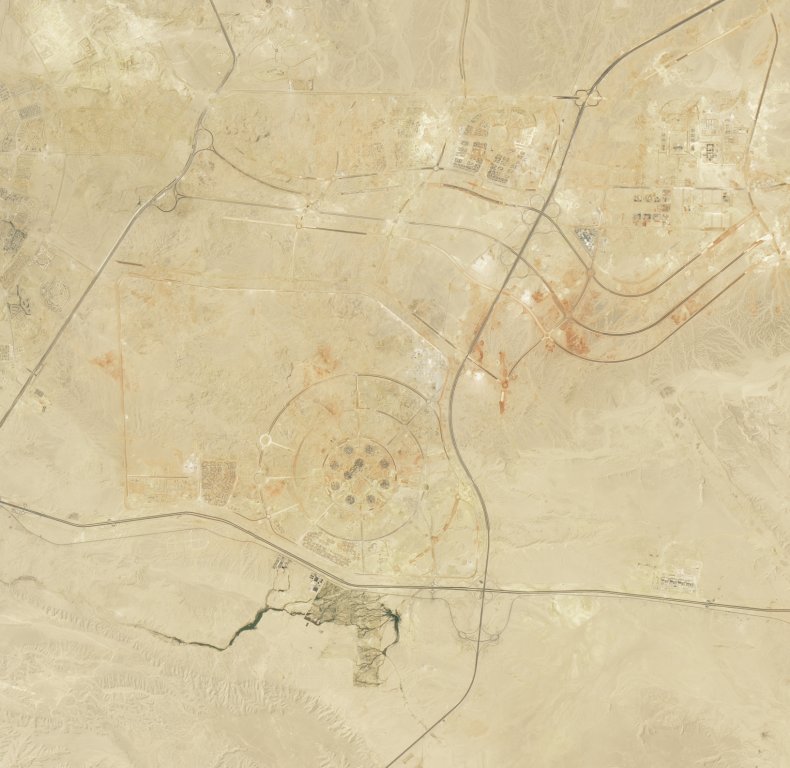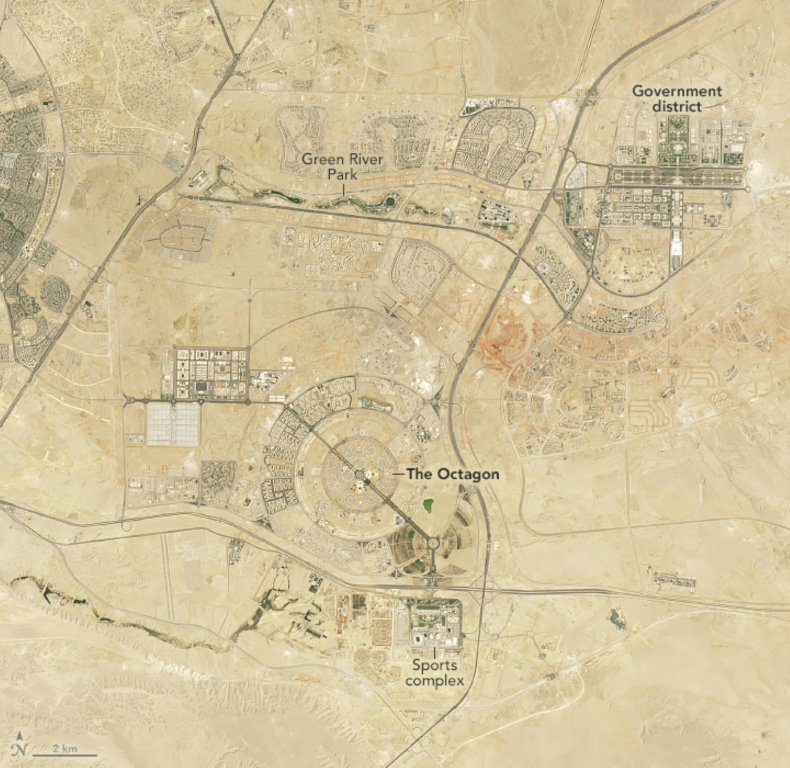Egypt's historic capital, Cairo, is witnessing the end of an era. After serving as the nation's political center since the 10th century C.E., the city is set to hand over the reins to a newly constructed settlement in the desert, about 28 miles to its east. This monumental shift is not just a change of location but a strategic move aimed at addressing the pressing issues that have long plagued Cairo, such as overcrowding, traffic congestion, and pollution.
The Egyptian government announced this ambitious project in 2015, spurred by the urgent need for a solution to the burgeoning population. New satellite images from NASA's Landsat missions reveal the rapid development of the yet-to-be-named "New Administrative Capital," which promises to reshape Egypt's future. This megaproject is designed to accommodate over 6 million residents and will eventually cover an area comparable to Singapore.
The transformation is already visible, as recent images taken by the Operational Land Imager (OLI) showcase the drastic changes to the landscape. The once bare desert land is quickly evolving into a sprawling urban center with significant infrastructure developments, including government offices, parks, and residential areas.
The images taken in August 2017 and projected for 2024 highlight this rapid growth. In the earlier image, the nascent construction site was hardly recognizable, while the 2024 images reveal a bustling city with key landmarks coming into focus. Among these is the Green River Park, a 10-kilometer stretch of green space designed to provide a natural oasis in the desert, featuring paths for walking and cycling amid native Egyptian flora.
Additionally, a dense cluster of government ministry offices and the Ministry of Defense's facility, known as The Octagon, are now part of the landscape. Southward, a sprawling sports complex is being developed, which aims to host Africa’s second-largest stadium and several other facilities, as Egypt prepares to launch a bid for the Olympics in 2036.
As of March 2024, over 1,500 families have already relocated to this New Administrative Capital, with expectations that this number could swell to 10,000 by year's end. Government ministries have started their operations in the new premises, and the Parliament has convened in its state-of-the-art building. Several banks and businesses are also planning to move their headquarters to this modern hub.


The decision to create the New Administrative Capital is a response to Cairo's soaring population, which was estimated at over 22 million in 2024. This figure translates to a density of more than 50,000 people per square mile, placing Cairo among the most densely populated cities globally. The rapid population growth, which has nearly tripled since 1984, has forced urban development to extend along the Nile River and into the surrounding desert.
Monitoring from space since 1965, NASA's Gemini 5 mission documented Cairo's early urban sprawl. More recent Landsat images illustrate the extensive urban expansion in greater Cairo over the past four decades. This growth has put immense pressure on Egypt's resources, especially the Nile River, which sustains about 95% of the country's population.
With rising demands for water from both domestic and agricultural sectors, studies suggest that Egypt may soon face a significant water deficit. This situation could force the country to import more water than what the Nile can supply by the end of the decade.
Do you have a tip on a science story that Newsweek should cover? Or perhaps you have a question about sustainable cities under construction? Reach out to us at science@newsweek.com!
References
Nikiel, C. A., & Eltahir, E.A.B. (2021). Past and future trends of Egypt's water consumption and its sources. Nature Communications, 12(1), 4508. https://doi.org/10.1038/s41467-021-24747-9
Exploring Education: A Guide To The Most And Least Educated States In The U.S.
Taylor Swift's Safety Concerns: A Closer Look At Stalker Incidents During Her Eras Tour
Waka Flocka Flame's Political Stance: Supporting Trump In 2024


